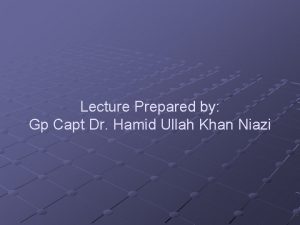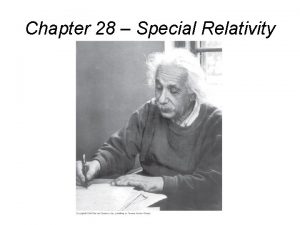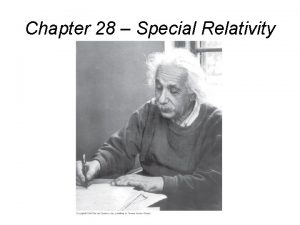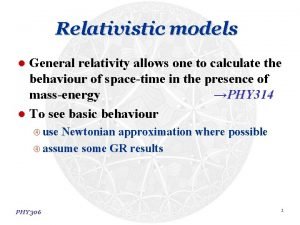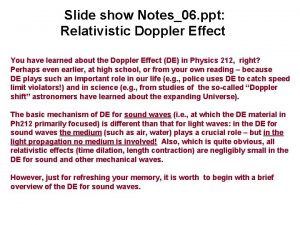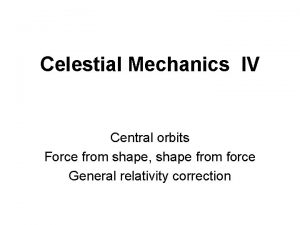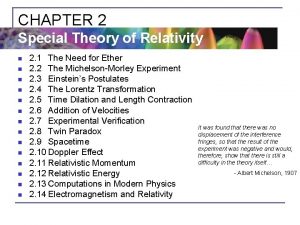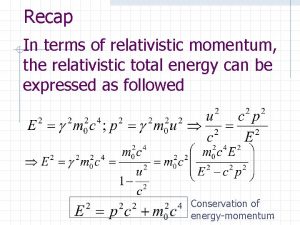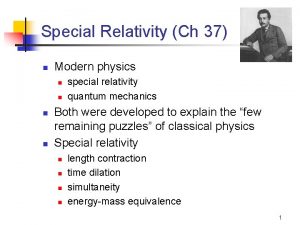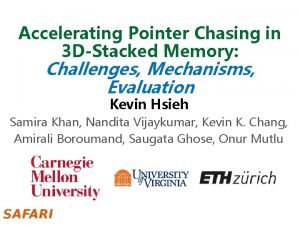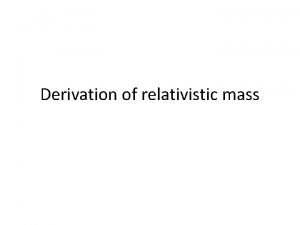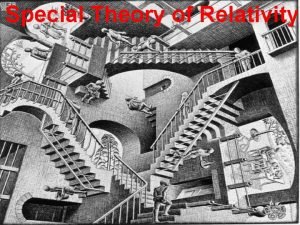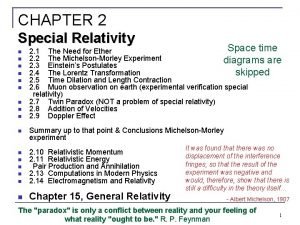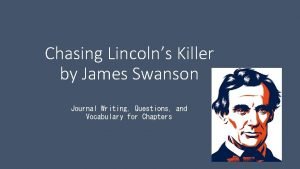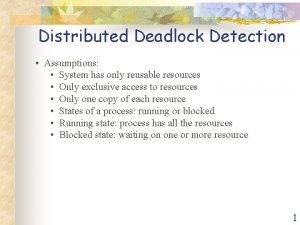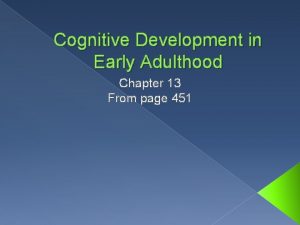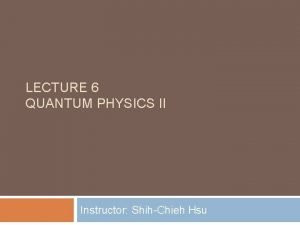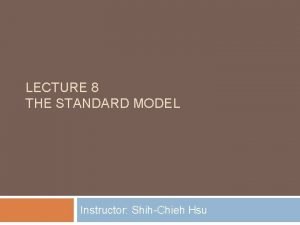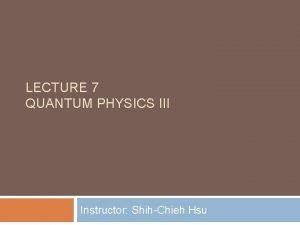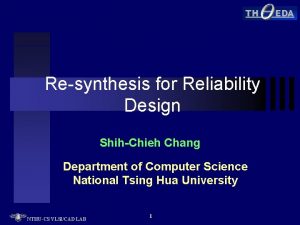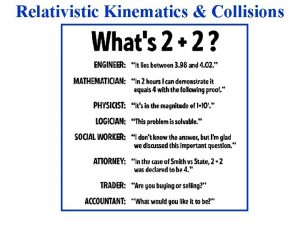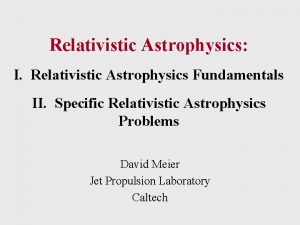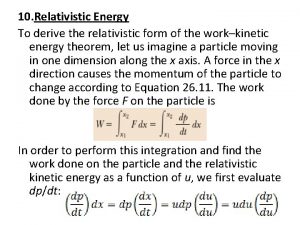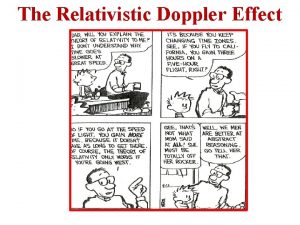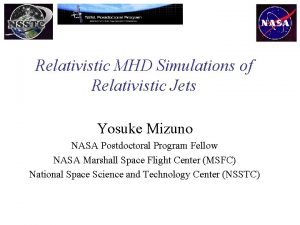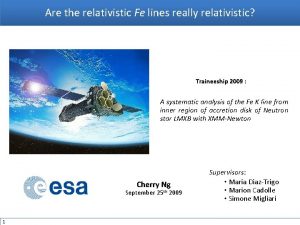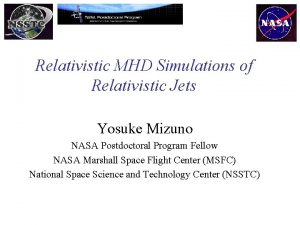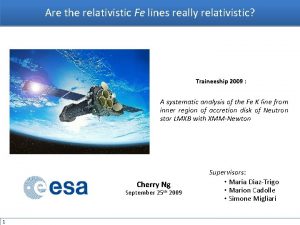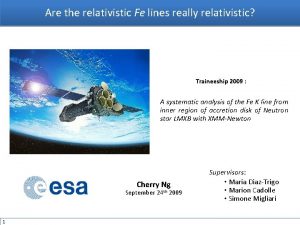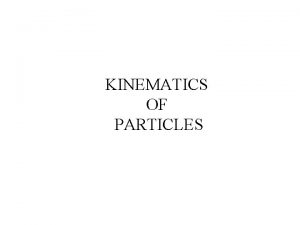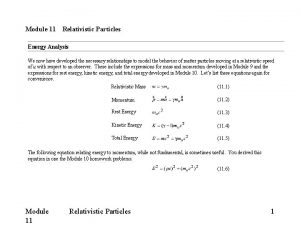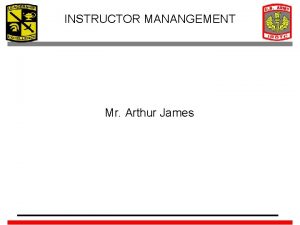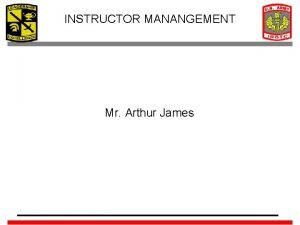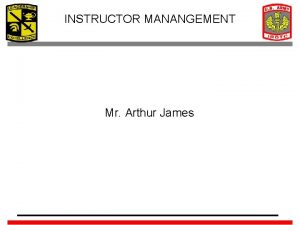LECTURE 9 CHASING RELATIVISTIC PARTICLES Instructor ShihChieh Hsu
























- Slides: 24

LECTURE 9 CHASING RELATIVISTIC PARTICLES Instructor: Shih-Chieh Hsu

Announcement 2 Final Report This Thursday 9: 20 am Each person has 7. 5 mins Remember the structure of the talk What Why Who When Where Results Discussion

The CMS Masterclass 3 Successful teamwork last week

4 The CMS Masterclass Discussions the W+/W- ratio. the e/μ ratio. the mass of the Z and other particles with similar decays from the statistical combination in a mass plot. How are our masterclass results compared to actual Higgs discovery? Detector/Physics/Analysis

Elementary Particles 5

Interactions 6

Quantum Mechanics 7 "quantum, " which means "broken into increments or parcels, ” is used to describe the physics of very small particles A few of the important quantum numbers of particles are: Electric charge. Quarks may have 2/3 or 1/3 electron charges, but they only form composite particles with integer electric charge. Color charge. A quark carries one of three color charges and a gluon carries one of eight color-anticolor charges. All other particles are color neutral. Flavor distinguishes quarks (and leptons) from one another.

Spin 8 • Spin is a bizarre but important physical quantity. • Large objects like planets or marbles may have angular momentum and a magnetic field because they spin. • Since particles also to appear to have their own angular momentum and tiny magnetic moments, physicists called this particle property spin. • This is a misleading term since particles are not actually "spinning. " Spin is quantized to units of 0, 1/2, 1, 3/2 (times Planck's Constant, ) and so on.

Pauli Exclusion Principle 9 Pauli Exclusion Principle, no two particles in the same quantum state could exist in the same place at the same time. But it has been since discovered that a certain group of particles do not obey this principle. Particles that do obey the Pauli Exclusion Principle are called fermions, and those that do not are called bosons.

Fermions & Bosons Behavior 10

Fermions and Bosons: Explained 11 The predicted graviton has a spin of 2.

A Lot To Remember 12 We have answered the questions, "What is the world made of? " and "What holds it together? " The world is made of six quarks and six leptons. Everything we see is a conglomeration of quarks and leptons. There are four fundamental forces and there are force carrier particles associated with each force. We have also discussed how a particle's state (set of quantum numbers) may affect how it interacts with other particles. These are the essential aspects of the Standard Model. It is the most complete explanation of the fundamental particles and interactions to date.

Elementary Particles 13

Big Theory Chart 14

How to detect the Higgs Boson? 15

16 Detecting invisible

What are debris? 17 Life time is longer enough to fly through the detector The tracker radius is about 1 m The lifetime of particle is longer than 3× 10 -9 s http: //pdg. lbl. gov

Particles and Detectors 18

How to measure charged & momentum? 19 Charge Momentum What happen for a neutral particle passing through magnet?

Particles and Detectors 20

Detector Design Generic Design Cylinders wrapped around the beam pipe From inner to outer. . . Tracking Electromagnetic calorimeter Hadronic calorimeter Magnet* Muon chamber * location of magnet depends on specific detector design

Particle Detection 22

Quiz 1 23 e-, e+ muon+, muon-

Quiz 2 24 quark-antiquark+ gluon (? )
 How metric chasing dial differ from british chasing dial
How metric chasing dial differ from british chasing dial 01:640:244 lecture notes - lecture 15: plat, idah, farad
01:640:244 lecture notes - lecture 15: plat, idah, farad Relativistic kinetic energy
Relativistic kinetic energy Chasing vermeer chapter summaries
Chasing vermeer chapter summaries Relativistic kinetic energy
Relativistic kinetic energy General relativity equation
General relativity equation Relativistic doppler effect ppt
Relativistic doppler effect ppt Clairaut equation
Clairaut equation Högkonjuktur inflation
Högkonjuktur inflation Relativistic thinking example
Relativistic thinking example Tom and jerry physics
Tom and jerry physics Chasing lincoln's killer chapter 4
Chasing lincoln's killer chapter 4 Relativistic velocity
Relativistic velocity Relativistic momentum
Relativistic momentum Relativistic momentum
Relativistic momentum Pointer chasing problem
Pointer chasing problem Relativistic mass derivation
Relativistic mass derivation Relativistic mass
Relativistic mass Physical development in adulthood
Physical development in adulthood Rest energy of a proton
Rest energy of a proton Relativistic thinking example
Relativistic thinking example Chasing lincoln's killer chapter 4
Chasing lincoln's killer chapter 4 Edge chasing algorithm
Edge chasing algorithm Cognitive development in early adulthood
Cognitive development in early adulthood Erin heim
Erin heim
